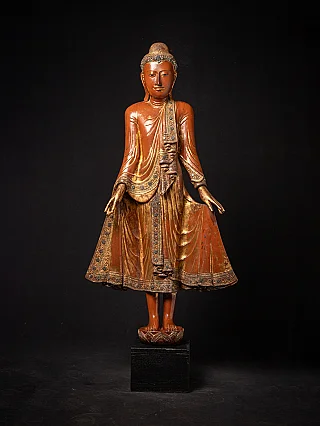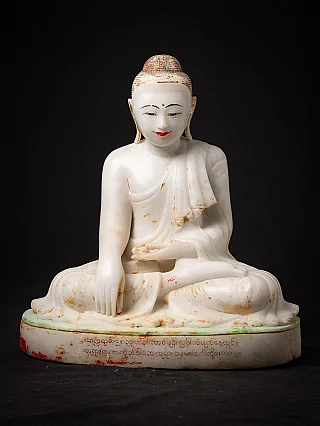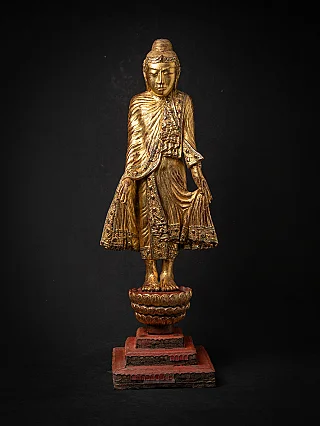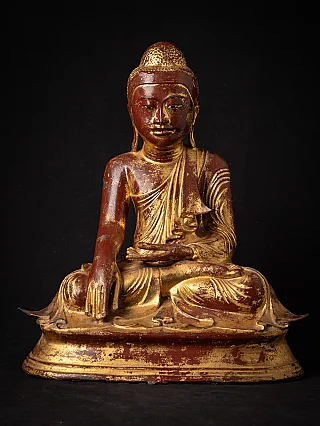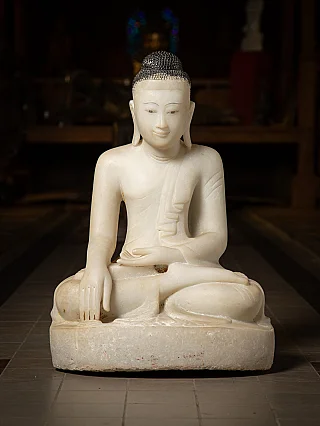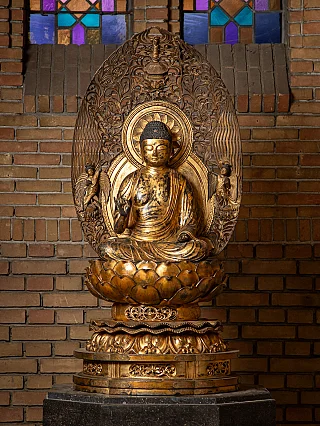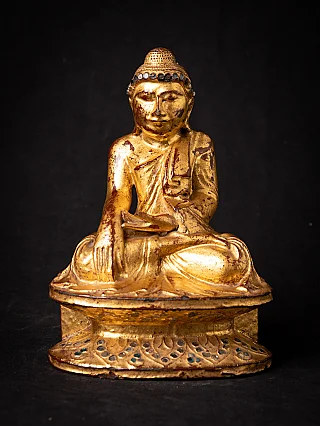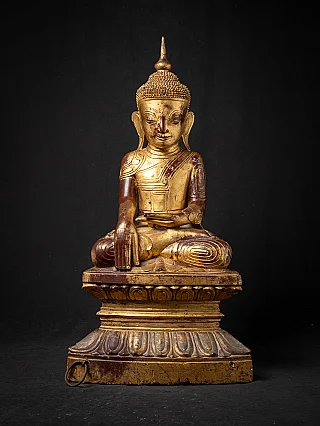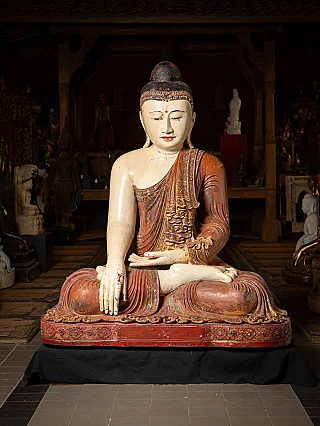Buddhist Deity: Manjushri

Who is Buddhist Diety Manjushri?
Buddhist Deity, Manjushri is also known by the other name, Manjushrikumarabhuta. Literally, the word Manjushri refers to " still a youth". In Mahayana Buddhism, he is associated with prajna while he is regarded as Yidam in Tibetan Buddhism. Therefore, Manjushri is manifested in numerous Tantric forms in Tibetan Buddhism. Among them, Yamantaka is the most wrathful manifestation of Manjushri. Other manifestation includes Namasangiti, Arapacana Manjushri, etc.
Manjushri in Mahayana Buddhism
It has been found that Manjushri is the oldest and most significant bodhisattva in Mahayana literature. He was first mentioned in the early Mahayana Sutras. With the association in the early tradition, Prajnaparamita Sutras, he came to symbolize the embodiment of Prajna. As it is mentioned in the Lotus Sutra, Manjushri has his own pure land called Vimala. According to Avatamsaka Sutra, Vimala pure land is located in the East. It is predicted that his pure land is one of the two best pure lands in all of existence that is found in the past, present, and future. It is also mentioned that when Bodhisattva Manjushri attains Buddhahood, his name will be changed into Universal sight. In Saptasatika Prajnaparamita Sutra, it has been mentioned the wisdom teaching of Manjushri. This sutra also contains a dialogue between Manjushri and the Buddha on the one samadhi.
Manjushri in Vajrayana Buddhism
In Vajrayana Buddhism, Manjushri is regarded as a meditational deity or Yidam. He is considered as a fully enlightened Buddha. Shingon Buddhism, a lineage of Vajrayana Buddhism, also considers Manjushri as one of the Thirteen Buddhas to who disciples devote themselves. He is mentioned in many esoteric texts such as Manjushri Mula Kalpa and Manjushrinamasamgiti. His consort is considered as Saraswati in some traditions.
Legenda of Manjushri
As mentioned in Swyambhu Purana, the Kathmandu Valley was filled with water and was regarded as a lake. It is believed that Manjushri who came as a Pilgrim saw a white lotus flower in the center of the lake. The lotus was emitting brilliant light. By observing the place, Manjushri cut off the mountain at the Chovar with his flaming sword. With the objective to let the lake drain out. As the water was drained out, the place where white lotus was emitting bright light became the great Swayambhunath Stupa and the valley became the place to live.
Iconography of Manjushri
Manjushri when depicted in Buddhist arts often holds a flaming sword in his right hand. It is believed that this sword represents the realization of transcendent wisdom which cuts down ignorance and duality. In his left hand, he holds the scripture, Prajnaparamita sutra, which is supported by Padma (lotus). This represents his attainment of ultimate realization from the blossoming of wisdom. Manjushri is depicted either riding on a blue lion or sitting on the skin of a lion. This symbolic representation means the use of wisdom to tame the mind, which is compared to riding or subduing a ferocious lion.
The representation of Manjushri is quite different in China and Japan. In Chinese and Japanese art, Manjushri is often depicted as holding ruyi scepter instead of the sword in his right hand. This is especially represented in the Vimalakirti Sutra, discussion with the layman Vimalakirti. According to Berthold Laufer, the first ever Chinese representation holding Ruyi instead of the sword was in an 8th century Manjushri painting. This painting was painted by Wu Daozi. In Chinese and Japanese paintings, a ruyi was represented as the Padma with a long stem curved like a ruyi.
In China, he is often paired with Samantabhadra and in Tibetan Buddhism, he is depicted in a trinity with Avalokitesvara and Vajrapani. He is also depicted along with Buddha statues in the Buddhist temple.
Share this page



















